Take Charge of Electric Vehicle Charging
What electric vehicle owners need to know about safely installing and operating a Level 2 charger at home
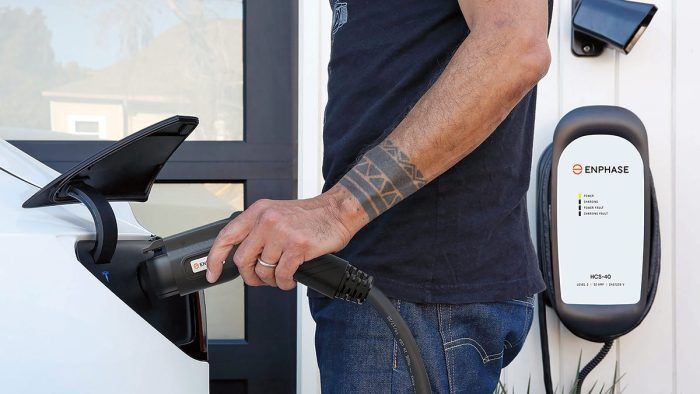
Synopsis: Former senior editor Charles Bickford describes the different levels of electric vehicle charging. For most homeowners who own an EV, Level 2 charging will be the most accessible amount of power, but there are a number of installation considerations and EV charging features to keep in mind when selecting a Level 2 EV charger.
The Edison Electric Institute (eei.org) predicts that by the year 2030, about one-third of cars (and trucks) in the United States will be battery powered. Environmentally, it’s an overall win that will help to reduce carbon emissions. Add in fuel cost savings and various federal and state rebates, and electric vehicles (EVs) start to look better and better to most folks. Given that charging a car at home is the least expensive and most convenient way to charge an EV battery, most drivers will want a home EV charger. For homeowners and renters with grid-tied solar, having an EV is a no-brainer. Often the low cost of electricity makes it possible to power the car very inexpensively or for free if the electric customer has a regular surplus of PV-generated power.
EV chargers, also referred to as electric vehicle supply equipment (EVSE), are classified by the amount of amperage they can supply to your car. The more amperage, the faster the charge. Your car battery’s size is measured in amps or kilowatts (kw), and also has a limit of how much charge it can take over a period of time, known as its acceptance rate. Level 1 and 2 chargers supply household AC power to an EV, where an onboard device converts the AC power to DC before it’s stored in the battery. Level 3 chargers supply DC power directly to the battery, making a faster charge time possible.
3 LEVELS OF EV CHARGERS
Faster charging rates cost more
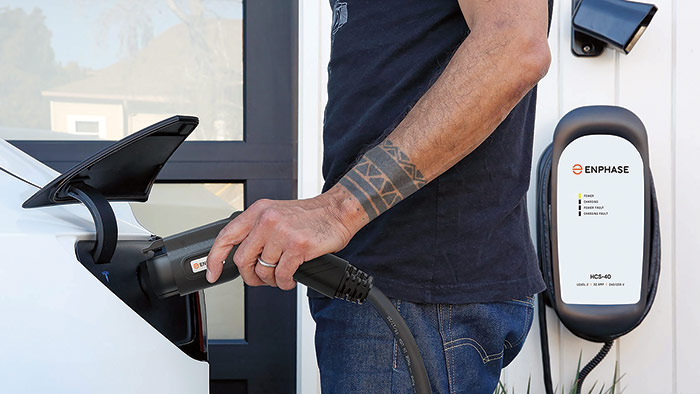
Not all chargers connect to all cars
At this time in North America, there are two different connectors that link the charger cable to the car’s charger port. (EV manufacturers in Europe and Asia use different connectors.) Tesla, the world’s largest EV manufacturer, uses one type, the NACS, while most others use another, the J1772 plug. Beginning in 2022, Tesla gave permission to other manufacturers to use their NACS connector. In response, multiple auto companies announced that, starting in 2025, their EVs will be equipped with the NACS charging port. Many of the companies that manufacture chargers (including Tesla) offer buyers the choice between connectors; some even offer dual-connector chargers with both types of plugs.
For those whose choice are limited (if, for example, you already have a charger with a J1772 connector and a new car with an NACS port), there are adapters that allow the connection, and costs typically range from $70 to $170.
What to look for in a Level 2 charger
Most EV owners will want a Level 2 charger for home charging, given their faster charging rate when compared to Level 1 chargers. If you only drive short distances, say 40 miles a day, you may be able to charge your car adequately with a Level 1 charger and you won’t need to install a new 240v circuit and Level 2 charger in your garage. If you do drive more than the Level 1 charger can produce, install a Level 2 unit and keep the Level 1 for road trips. The marketplace is overflowing with Level 2 chargers, so here are a few tips to keep in mind.
First and foremost, be sure that the charger has a UL certification or the equivalent, and that it has at least a three-year warranty—many do not. Another thing to look for is rebates for a particular model. For instance, in the state of Connecticut, the utility Eversource offers rebates for ChargePoint and JuiceBox chargers.
The charger’s connecting cable should be at least 20 ft. long, so that you can reasonably reach your car’s port no matter where the charger is installed. The charger should have a weatherproof housing that protects the charger (and therefore, you) from the elements. Also, look for controls that allow you to monitor and change the charging cycle. Phone apps are often used to control or monitor the performance of a charger. On-board programs may also auto-detect the amperage of the circuit and schedule charging during off-peak times, when the electric rates are lower.
Potential EV owners should also think about their driving needs when they buy a charger. If you have two EVs, consider dual chargers that can split a 40-amp output between the two cars at a rate of approximately 15 miles per hr.
A BUYER’S GUIDE TO EV CHARGERS
7 Features to consider for level 2 charging
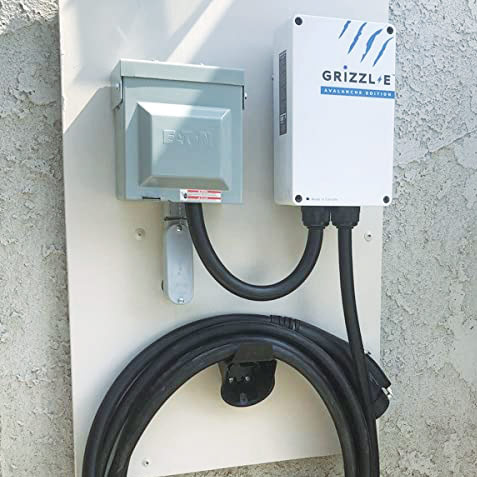
OUTDOOR-RATED Grizzl-E Avalanche Edition
|
|
REMOTE MONITORING Many chargers have smartphone apps to keep you informed of your vehicle’s battery level and the charging rate. Most can also help you find commercial fast-charging stations when you’re traveling. ChargePoint Home Flex |
|
Enphase HCS series |
|
SIDE HOLSTER Legrand’s Level 2 chargers have a holster separate from the charger housing. The arrangement allows you to hang the charging cable closer to the connection on the car, so there’s less cable dragging when connecting and disconnecting. Legrand L2EVSE48AC |
|
PART OF THE DECOR Tesla’s Wall Connector is suitable for both indoor and outdoor installations and can be equipped with the NACS (Tesla) or J1772 connector. Tesla also offers four colors of their Wall Connector faceplates ($100) to match your charger with your garage or vehicle. Tesla Wall Connector |
|
TWO FOR ONE The Grizzl-E Duo can charge two electric vehicles at the same time. It has a pair of 24-ft. cables and load-sharing technology that charges one or both vehicles depending on their state of charge. Grizzl-E Duo |
|
Larger vehicles benefit from the faster charging times of hardwired chargers. Ford’s largest, 80-amp home charger requires a 100-amp circuit. It can bring the F-150 Lightning’s extended-range battery from 15% to 100% power in about 8 hours. Ford Charge Station Pro |
INSTALLING A LEVEL 2 CHARGER
Code requirements, clearances, and more
The National Electrical Code (NEC) requires home EV chargers be mounted at least 18 in. from the floor (24 in. if outside) and have 12 in. of clearance on both sides. The cable should reach the car’s charging port without straining. Electrical contractor Joe Fratello likes to install chargers and their receptacle outlets on the wall separating two garage doors, provided the space is at least 3 ft. wide. This gives owners the option of easily charging two cars, indoors or outdoors by running the cord(s) under the garage door.
Both hardwired and plug-in Level 2 chargers require a 240v circuit, which code requires a permit and inspection to install. When it comes to Level 2 charging, it’s best to hire a licensed electrical contractor to ensure the installation meets code. According to HomeAdvisor.com, the national average cost to install a Level 2 charger runs between $400 and $1700, minus a federal tax credit of up to 30% of the installation cost.
Hardwired vs. Plug-in Chargers
Hardwired chargers can support up to 80 amps and may be required for large vehicles or high-mileage commuting.
PROS Fastest possible charging
CONS More expensive charger and installation; hard to move once installed
Plug-in chargers offer slower charging time because circuits and receptacles are limited to 40 amps. They’re easy to move, making them a good option for renters.
PROS Less expensive to install
CONS Receptacles not meant to be plugged and unplugged repeatedly
A. Future-proof panel: EV chargers can be powered by a main panel or a subpanel circuit. Adding a subpanel adds cost, but can future-proof the installation should you decide to install a larger charger or a second EV.
B. Appropriate amperage: For fastest charging, your electrical panel must accommodate an additional 40-amp to 60-amp circuit. Many chargers can be set for a slower charging rate that uses less amperage if needed.
C. Correct conductors: In most areas, the NEC requires that every 240v circuit is protected with a ground-fault circuit interrupter (GFCI) at the panel as a safety measure. Some chargers have internal GFCIs; beware that when you combine two GFCIs on the same circuit, it can lead to nuisance trips that turn off the charger when no fault exists. To supply the charger with electricity you need 8-ga. (40-amp), 6-ga. (55-amp), or 3-ga. (100-amp) copper conductors in a cable or conduit unless the vehicle charger is especially far from the electrical panel, in which case you may need to upsize the conductors.
D. Optimal outlets: Receptacle outlets or hardwired chargers should be mounted on a fire-rated wall that is covered with at least one layer of 5⁄8-in. drywall. The 240v receptacles for plug-in chargers must be UL-certified or the equivalent, and should be a commercial grade so that they resist heat generated by long charge times. EV expert Sandy Munro says commercial receptacles like those made by Hubell better withstand the heat of EV charging than cheaper options. Level 2 plug-in chargers use either a NEMA 14-50 or NEMA 6-50 receptacle. The more common 14-50 receptacle includes a neutral conductor. With one fewer conductor, the 6-50 receptacle is often less expensive to install. Some EV manufacturers offer both options, leaving the choice up to preference. NEMA 6-50 and 14-50 plugs and receptacles are not meant to be unplugged and plugged in repeatedly. The connections inside the receptacle can loosen, creating a fire hazard.
What’s on the horizon?
The first electric vehicle was invented in 1891; obviously, there have been massive developments in EV and EV-charging technology since then. We may expect the next generation of Level 2 chargers to be more powerful, capable of producing 19.2kw of power at 80 amp, and charging at a much faster rate than the contemporary 40-amp to 50-amp chargers. These higher-powered residential chargers may also take the pressure off the larger problem of establishing a nationwide Level 3 charging infrastructure, which has lagged in the more remote regions of the country.
The method of charging may also change. Companies such as WiTricity, Plugless Power, Hevo, and others are manufacturing EV chargers that work just like those wireless phone chargers you may have seen. Known as inductive charging, a ground pad creates a magnetic field that transfers power to a receiving coil mounted underneath the car. Receivers are sized according to the height of the vehicle from the pad—the lower the car, the smaller the receiver. A car doesn’t have to be perfectly centered over the pad to receive the charge. Both the level of charge (up to 11kw) and costs on inductive chargers are similar to a Level 2 hardwired charger.
In addition to their contribution to cleaner air, EVs can become part of the larger power grid. A specialized bidirectional charger can transfer AC power to the EV battery, and then convert the DC power from the car back to AC power. At the time of writing, Ford, Hyundai, Nissan, Kia, Volkswagen, and Mitsubishi EVs are equipped with bidirectional chargers that allow them to power small appliances, laptops, and more via on-board receptacles. Builder Josh Salinger uses his company’s Ford’s F-150 Lightning, which has ten 120v standard receptacles and one 240v receptacle, to power job-site tools.
An EVs battery can also be used as backup household power, known as vehicle-to-home (V2H) technology. The Ford Lightning’s bidirectional system, when paired with its Home Integration System, can power an average home during a blackout for up to three days. GM and Volkswagen have similar V2H integration systems ready to launch in 2024, with other manufacturers sure to follow.
As the infrastructure for EVs develops further, bidirectional chargers will also be enlisted to help beef up the grid during brownouts or periods of high demand. Vehicle-to-grid (V2G) technology allows an individual or fleet of EVs to charge during periods of low usage and contribute back to the grid during periods of high usage. In theory, contributors would be credited in a fashion similar to that of solar net-metering. One sign of the perceived importance of this new technology was the announcement in July of 2023 by the U.S. Department of Energy of its planned initiative to build an infrastructure between states, agencies, and manufacturers to create a more resilient, dependable power grid through the use of bidirectional chargers and the increasing numbers of electric vehicles.
—Charles Bickford is a former senior editor. Fine Homebuilding reader and EV enthusiast David Pickering provided assistance for this article. Photos by the manufacturers. Drawing by Christopher Mills.
From Fine Homebuilding #322
RELATED STORIES
- Power Your Home with Bidirectional Charging
- Fast, Flexible Car Charger
- Smart and Agnostic Electrical Panel
To view the entire article, please click the View PDF button below.
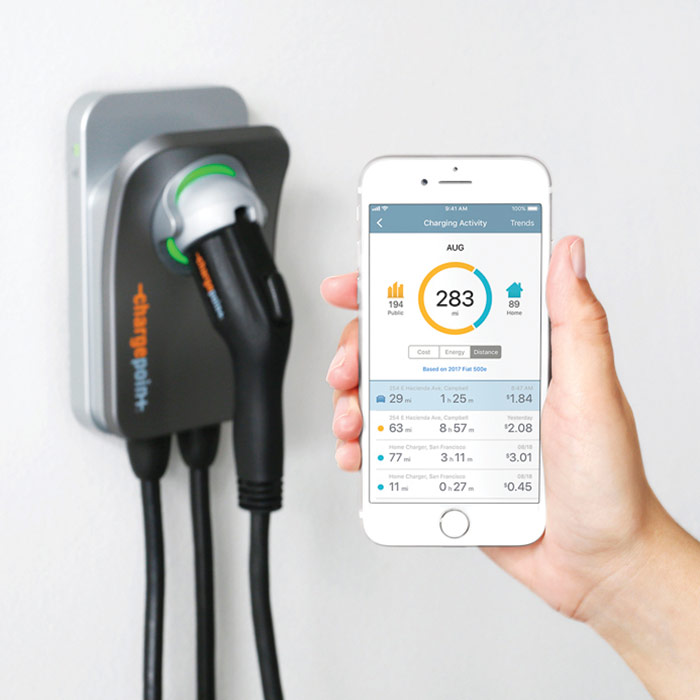

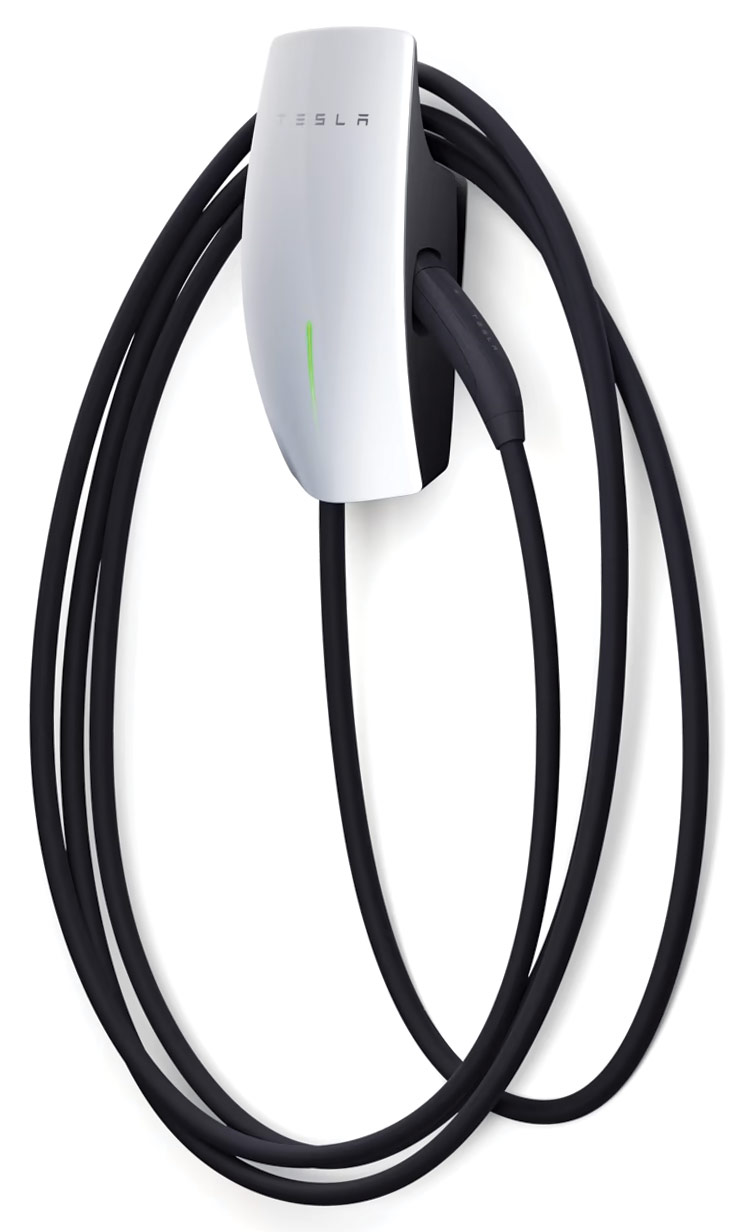
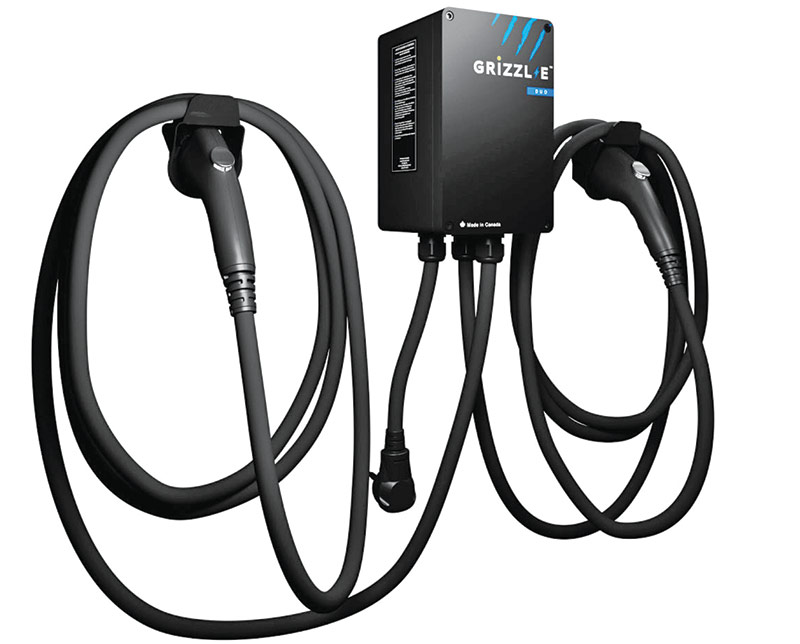
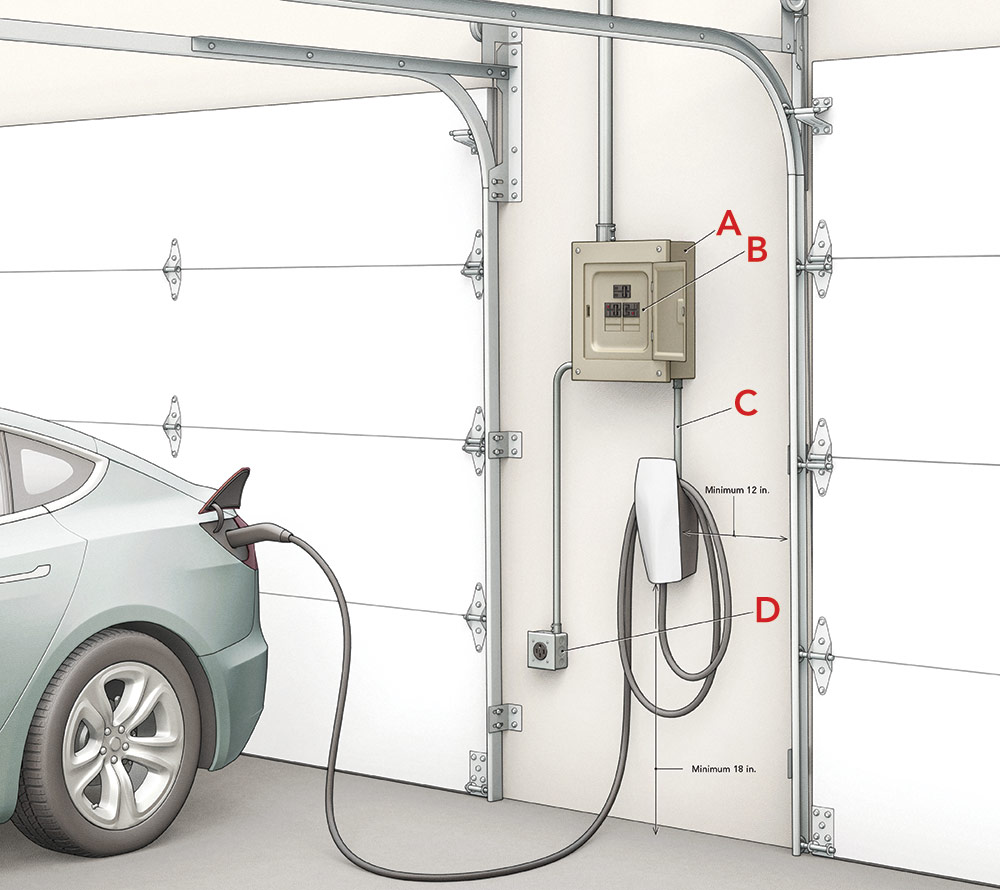






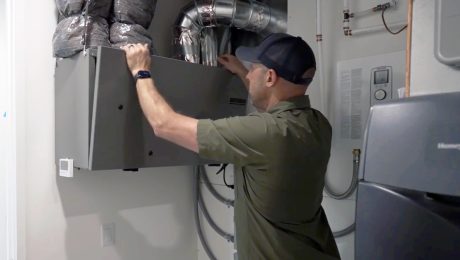




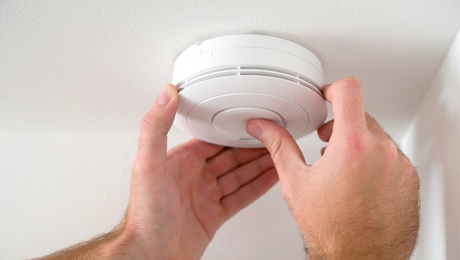
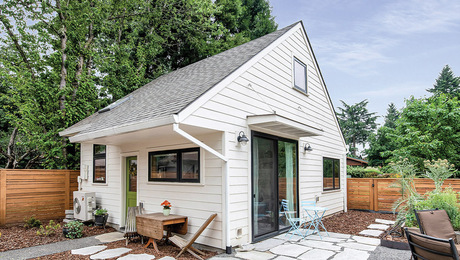









View Comments
Please check the wire gauge sizes listed in paragraph C.
Awesome article, thanks.
I recently installed a Grizzle-e outdoors.
Couple things to note:
The cheap 14-50 receptacles at home centers are notorious for melting when used for EV charging. Buy a commercial receptacle or hard wire.
Most outdooor enclosures are designed for 30A RV receptacles. The Hubbell is a larger diameter, you’ll need to modify the enclosure (I did it with a hole saw).
Factor in the cost of 6ga wire and site your charger accordingly. Copper ain’t cheap.
We bought a 23 Chevy Bolt EUV and GM included install of a 50Amp outlet by QMERIT. Well GM was charged $1250 for the install by a 'certified QMERIT electrician'. One problem though the electrician did a not only a sloppy job but a dangerous one. He installed a cheap dryer outlet and wired it without torquing the screws. He also stripped the wires way too much as you can see in the photo! I corrected his work by installing a Hubbell outlet, stripping the wires correctly and torquing the screws with the proper tool. I complained to QMERIT but don't know if anything was done.
This article missed an opportunity to offer up the least expensive way to charge at home. Just install a 14-50 heavy duty plug on the wall and plug in the charge cord you get with your EV and buy an adapter for the cord to accept the 14-50 plug. I’ve found that a “wall charger” is unnecessary and that the car’s own software will control the charge rate (amps), time to charge or time needing to be finished. Keep it simple and save $1,000.